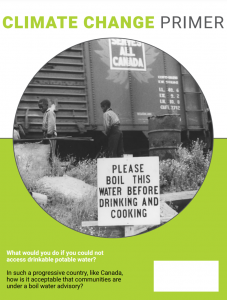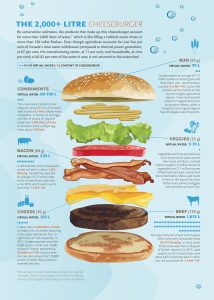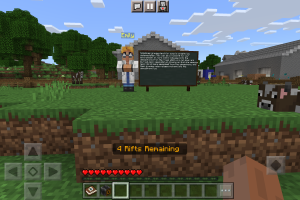Climate change is real and our students know it. In a very real way, they are seeing the impacts. Conversations are taking place in classrooms around the impact of our actions on the environment and students are stepping up, trying to effect change. This past weekend was Earth Hour and there were so many posts online of different commitments people were taking in hopes of tackling this very real problem. While there is no simple one act that we can take, if we all do something, we can hopefully slow its progression.
ETFO’s Climate Change Primer defines climate change as, “Extreme changes in weather patterns that are brought on by human activities such as the emission of greenhouse gases (carbon dioxide, methane) and land usage in the form of industrial agriculture”. The 2020 resource was developed to help members learn and consider how themes such as environmental racism, colonization and migration intersect with climate change. It’s a great resource for educators to learn and consider diverse perspectives, prior to engaging in conversations around climate change in the classroom.
patterns that are brought on by human activities such as the emission of greenhouse gases (carbon dioxide, methane) and land usage in the form of industrial agriculture”. The 2020 resource was developed to help members learn and consider how themes such as environmental racism, colonization and migration intersect with climate change. It’s a great resource for educators to learn and consider diverse perspectives, prior to engaging in conversations around climate change in the classroom.
 One theme from the Climate Change Primer was access to water, which got me thinking about the use of water in agriculture. In the past, I’ve shared infographics like this one on how much water it takes to produce different items. Students are always stunned when they realize just how much water it takes to make some of the everyday items we consume and/or use. Visuals are powerful tools to spark conversations and allow us and students to be better informed. With information, this helps us gain a deeper understanding that the items we have at our disposal, often come with a high cost to the environment.
One theme from the Climate Change Primer was access to water, which got me thinking about the use of water in agriculture. In the past, I’ve shared infographics like this one on how much water it takes to produce different items. Students are always stunned when they realize just how much water it takes to make some of the everyday items we consume and/or use. Visuals are powerful tools to spark conversations and allow us and students to be better informed. With information, this helps us gain a deeper understanding that the items we have at our disposal, often come with a high cost to the environment.
Excitingly, this year’s Minecraft Education Edition’s new challenge – Climate Futures: The Farm – allows students to explore the impact of agriculture on climate change.  With a Teacher Guide and Powerpoint presentation, students can walk away from the experience having had discussions around the following key questions:
With a Teacher Guide and Powerpoint presentation, students can walk away from the experience having had discussions around the following key questions:
- Why is food production important to humanity?
- With a growing population in the world, how might agricultural practices impact the climate?
- What alternative ways are there to increase food production without further damage to the environment?
- Is there a link between deforestation, transport and agriculture?
- What can we do individually, locally, nationally and globally to address the problem of mass farming and food production and its impact on the climate?
While I haven’t tried this activity with students yet this year, I know that last year’s Minecraft challenge around social justice sparked many meaningful conversations within the classroom and saw students making some commitments to action. If you give this year’s challenge a try, please let me know how it goes!
As I have stated before, climate change is real. In what ways might we inspire our students to learn and gain a deeper understanding of the actions they can take to bring about change?
